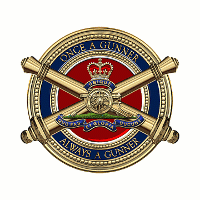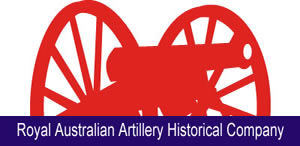During 1941 Ciro was trained in artillery communications and on the 9th of February 1942 he was graded as a Signaller and continued training with the Regiment. In July 1942 the Regiment was transferred to Fremantle in Western Australian. The Regiment was part of the 8th Infantry Brigade, 2nd Division, 3rd Australian Army Corps. Ciro and the Regiment conducted training in such areas as Chidlow, Gin Gin, Bellevue, Geraldton, Dandaragan and Mingenew. One night Ciro and a few mates offered to help some local nuns out by moving a piano for them. Anxious to move on to town, the men were curious as to why the nuns wanted them to stay a bit longer. Soon the answer arrived in the form of bottles of beer that the nuns had persuaded the local publican to bring around for them. The beer was most appreciated by the men in view of the restrictions on the availability of beer to the public. On the 18th of July 1942, the Regiment was redesignated as an AIF Regiment and became known as the 7th Australian Field Regiment (AIF).
In 1943, 7 Field Regiment was disbanded and Ciro was transferred to 2 Australian Field Training Regiment at Greta in NSW. In late 1943, 4th Australian Field Regiment (Jungle Division) AIF was warned out for tropical service and in January 1944 moved to Townsville. Ciro was posted to 4th Field Regiment in Townsville and on the 3rd of March 1944 embarked with the Regiment on HMAS Katoomba for Lae in Papua New Guinea. The Regiment fired its first rounds on active service in February 1944.
During 1944, Ciro was able to return to Australia on compassionate leave. He managed to get on a ship back to Brisbane and then on to Newcastle and eventually back to Sydney.
In January 1945 4th Field Regiment was completing its move to Bougainville and Ciro sailed from Lae to Bougainville on the “Lindley M Garrison”. The Regiment was part of an Australian force sent there to relieve the American troops destined for the Philippines. During 1945 the unit was involved in several operations to clear Japanese forces from the island. According to historian Arthur Burke, 15 members of the Regiment were killed and 19 were wounded in action. Ciro was still with the unit when on the 15th of August 1945, Japan’s unconditional surrender was announced. It was not until January 1946 that Ciro was able to get on a ship, the “Georgetown Victory” and arrived in Brisbane in February 1946. Incidentally the “Georgetown Victory” ran aground and was wrecked in April 1946.
Ciro was discharged from the AIF on the 17th of May 1946. In 1952 he married Jeannette and they ran a Post Office/Store in Westmead. Ciro also ran a newsagency and would meet the train at 4.00am every morning to collect the daily papers. In the late 1950s they moved to Northbridge and Ciro worked in the Insurance industry. By the late 1970s, Ciro was working with the NSW Building Society (St George Bank) and eventually moved to manage a branch in Leichardt partly because of his knowledge of Italian.
At the age of 64 Ciro retired from the banking industry and took on several courier jobs. By 1989 his health was deteriorating and continued to worsen until his death in 1995.
Ciro was survived by his wife Jeannette, sons, Guy Michael who died in 2002, Bernard and Paul and daughters Catherine and Luisa.
|








